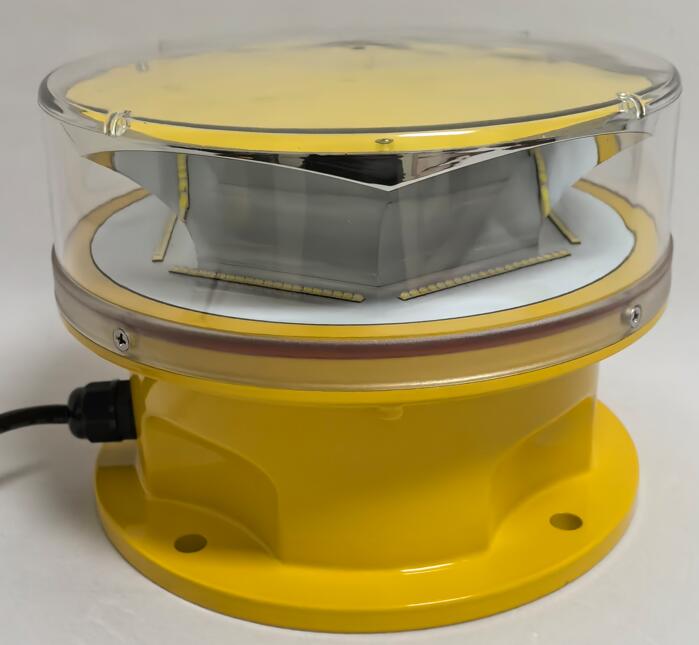In the vast and complex world of aviation, safety is the unwavering priority that governs every procedure, technology, and regulation. While the spotlight often falls on advanced avionics, air traffic control, and aircraft design, a critical and often overlooked sentinel works tirelessly through the night and in low visibility: obstruction lighting aviation systems. These unassuming beacons are the silent guardians of the sky, preventing catastrophe by marking man-made structures that pose a threat to airborne navigation. Their role is not merely supplemental; it is fundamental to the integrity of the entire global air transport system.
The primary purpose of obstruction lighting is simple yet vital: to make tall objects visible to pilots. This includes a wide array of structures such as communication towers, wind turbines, skyscrapers, bridges, cranes, and even power lines. Without these lights, these obstructions would blend into the dark tapestry of the night or become obscured by fog, rain, or snow, creating invisible barriers along flight paths. The system provides a universal visual language that pilots can instantly recognize and interpret, allowing them to take necessary evasive action long before a potential conflict arises.

The engineering and application of obstruction lighting are governed by strict international standards, primarily those set by the International Civil Aviation Organization (ICAO) and adopted or expanded upon by national bodies like the Federal Aviation Administration (FAA) in the United States. These regulations are not arbitrary; they are based on extensive research into human factors, photometrics, and aircraft performance. The systems are meticulously categorized based on the structure's height, location, and the type of air traffic it may affect.
obstruction lighting aviation
|
A typical comprehensive obstruction lighting system employs a combination of lights to serve different functions. Red obstacle lights, which are steady-burning, are typically used for nighttime marking on structures of lower height. For taller structures and those considered extreme hazards, high-intensity white strobe lights are employed. These flashing white lights are highly effective during both day and night and are exceptionally visible over long distances. To provide maximum conspicuity, especially at twilight or in hazy conditions, many structures utilize a dual system: red steady-burning lights for nighttime and bright white strobes for daytime and twilight. Medium-intensity lights bridge the gap, often used in various flashing configurations.
The placement of these lights is a science in itself. Lights must be installed at the highest point of the obstruction and at intermediate levels for very tall structures, ensuring the object's profile is clearly defined from every angle of approach. The specific number and spacing of lights are dictated by the structure's dimensions to ensure it is never perceived as a single, non-threatening point of light but rather as a formidable object to be avoided.
Beyond the standard tower or building, unique challenges require tailored lighting solutions. The proliferation of wind farms is a prime example. A cluster of wind turbines creates a concentrated zone of danger. Lighting each turbine individually would create a confusing "Christmas tree" effect for pilots, making it difficult to discern the farm's scale and boundaries. Instead, sophisticated systems are used where only the perimeter turbines are lit, clearly defining the area of the wind farm. Furthermore, the adoption of synchronised lighting ensures all strobes flash simultaneously, reducing pilot distraction and enhancing the recognition of the hazard's collective shape.
Another significant advancement is the development of obstacle detection and lighting control systems. These automated systems use sensors to monitor real-time visibility conditions. In clear weather, the lights may operate at a lower intensity or even deactivate certain strobes to minimize light pollution for surrounding communities—a growing environmental and social concern. As soon as sensors detect a drop in visibility due to fog, low clouds, or precipitation, the system automatically escalates to full-intensity operation, ensuring safety is never compromised. This smart technology balances the critical need for safety with the responsibility to be a good environmental neighbor.
The importance of reliable power sources for these systems cannot be overstated. A failure of obstruction lighting can instantly transform a known, charted hazard into an invisible trap. Therefore, backup systems are mandatory. This almost always includes an uninterruptible power supply (UPS) or batteries that can take over immediately in the event of a main power failure, keeping the lights operational for a critical period. For remote structures where grid power is unreliable or unavailable, solar-powered obstruction lights offer a robust and sustainable solution, ensuring continuous operation without connection to an electrical grid.
Maintenance and inspection form the backbone of a reliable obstruction lighting aviation safety program. Regulatory authorities require periodic inspections to ensure every component is fully functional. This involves not just checking for burned-out lamps but also cleaning lenses obscured by dirt or insects, verifying the alignment of light beams, and testing control systems and backup power. The advent of remote monitoring technology has revolutionized this process. Modern systems can transmit their status—including lamp failures, power issues, or intensity levels—to a central monitoring station 24/7, enabling engineers to dispatch maintenance crews immediately when a fault is detected, long before it becomes a safety issue.
Obstruction lighting aviation systems represent a perfect synergy of regulation, engineering, and technology, all dedicated to the singular goal of preserving life. They are a testament to the aviation industry's proactive approach to risk management, addressing a hazard by making it visibly obvious. From the steady red glow on a suburban radio mast to the synchronised flash of a sprawling offshore wind farm, these lights form an indispensable network of beacons that safeguard the airways. They may operate in the background, unnoticed by the millions of passengers who fly safely every day, but their persistent vigilance is a cornerstone of modern aviation safety, ensuring that the sky remains a realm of safe passage.

